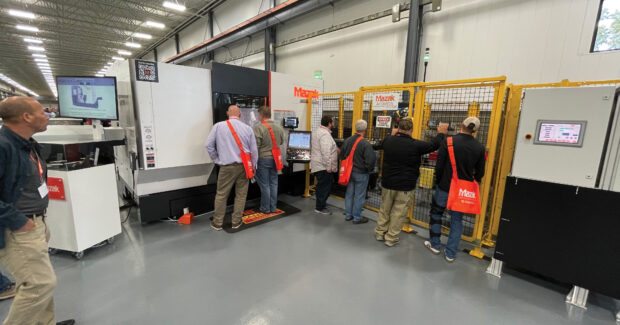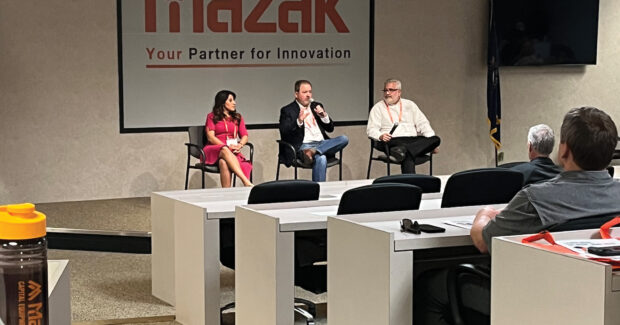Automation Continues to Dominate the Metalworking Industry
Panelists at Mazak Discover discussed job shops and the workforce: with automation you are not reducing labor but adapting the skill sets needed to thrive in the factory of the future.
Posted: November 3, 2023
The metalworking industry will be driven by automation, robots and cobots, and artificial intelligence. Those are the constant themes at trade shows, webinars and other industry events. But where do you start or what technologies and machines do you add to ensure wins?
A recent panel of job shop industry veterans spoke at Mazak Discover 2023, held at the manufacturer’s North American headquarters in Florence, Ky., on the status of the shop. For Bob Faxon, CEO of Faxon Machining, a supplier to the defense industry, he advised to break into automation by making it work for your shop. Address your pain points to ensure wins and success. He noted not only do you need buy in from employees but also banks and business partners. His tips for success in the factory of the future: 1.) pay more than others within a 20-mile radius; 2.) offer the best value to customers; and 3.) offer the highest returns on investment to shareholders.
Faxon added that for his company, machine tools are disruptive; the company isn’t looking for incremental gains. Faxon Machining is exploring the addition of additive manufacturing to the company’s processes for the development of a new defense product.
Eric Metcalfe, CEO of RPM Carbide Die, a precision grinding company, said that the company’s automation journey has led them to machines that can do it all, such as the Done in One machine concept from Mazak, which incorporates all processes from raw materials input through final machining in just one machine. Metcalfe said these machines provide untold advantages because you never know what jobs are going to come through the door.
RPM Carbide Die works to run a lights out operation to meet the short runs and large amounts of change over in the company’s processes. He is a proponent of the skilled trades, and the company is currently training seven apprentices.
For Nicole Wolter, president & CEO of HM Manufacturing, Inc., a manufacturer of power transmission components, robots in the shop remains a huge topic. HM Manufacturing has installed robots on their mills to retain employees and stay lean. She said that robots allow your shop to increase the skill levels of your employees so they can learn other things. Wolter noted that the ease of use of technologies and automation in Factory 4.0 helps shift the narrative so your shop can keep automating.
Wolter pointed out that the average age of employees at HM Manufacturing is 32 years old. The company offers a career path so that when high school interns are finished with their internships, they are NIMS certified, and are trained in more than one area. The company also pays their interns. In addition to programming and engineering exposure, the company also provides internships for the business side of the house, such as marketing and social media. Wolter said the company does this to create awareness, not to generate sales. These young people spread the word of their experiences in today’s manufacturing environment to their friends, attracting the younger generation to manufacturing opportunities.
Redefining Laser Cutting
Speaking of automation and robotics, this issue’s cover story features commentary from leading sheet metal laser cutting machine manufacturers about what’s next. The answers showcase technologies punctuated by automation and artificial intelligence.
The higher powered laser-cutting systems of today require high-speed automation and material handling to keep up with production. What good does all that power do if the parts are held up from being further processed? Manufacturers continue to responded with automated cutting and sorting systems that feature robots and automated mobile robots to keep production humming along efficiently.






